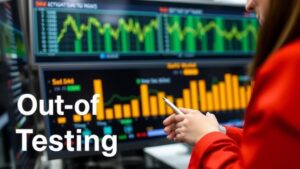Highlighting the Shift to Algorithmic Approaches
In today’s fast-paced financial landscape, automated decisions are no longer a luxury—they’re a necessity for savvy investors.
Backtesting Portfolio Strategies: A Comprehensive Guide
In the world of investing, the difference between success and failure often hinges on the strategies employed. One of the most effective methods to evaluate the potential efficacy of these strategies is backtesting. Backtesting allows investors to simulate trading strategies using historical data to gauge their effectiveness before applying them in real-time. This article will delve into the intricacies of backtesting portfolio strategies, providing a detailed framework for understanding its importance, process, and best practices.
Backtesting is the process of applying a trading strategy to historical market data to determine how that strategy would have performed in the past. It allows investors to test their ideas and make data-driven decisions rather than relying solely on intuition or speculation.
Importance of Backtesting
Backtesting serves several critical functions in the investment process:
- Risk Assessment**: It helps investors understand the potential risks associated with a strategy.
- Performance Evaluation**: Investors can evaluate the potential return on investment (ROI) for different strategies.
- Strategy Optimization**: By analyzing historical performance, investors can tweak their strategies to improve outcomes.
- Confidence Building**: Knowing that a strategy has worked in the past can instill confidence before applying it in live markets.
The Backtesting Process
Backtesting involves a systematic approach to determine the viability of a trading strategy. Here’s how to go about it:
Step 1: Define the Strategy
Before diving into the data, it’s crucial to clearly define the trading strategy you want to test. This includes specifying:
- Entry and Exit Rules**: Conditions under which trades will be opened and closed.
- Position Sizing**: How much capital will be allocated to each trade.
- Risk Management**: Techniques to limit losses, such as stop-loss orders.
Step 2: Gather Historical Data
The next step is to collect historical price data relevant to your strategy. This data can include:
- Price History**: Daily, weekly, or monthly price data for the securities in your portfolio.
- Volume Data**: Trading volumes for each security.
- Market Conditions**: Economic indicators and market events that could impact performance.
Step 3: Implement the Strategy
Using backtesting software or programming languages (like Python or R), implement your defined strategy against the historical data. This process often includes:
- Coding the Strategy**: Translating your trading rules into a code that the software can execute.
- Running Simulations**: Executing the strategy over different time frames to observe its performance.
Step 4: Analyze Results
After running the backtest, you’ll need to analyze the results. Key metrics to consider include:
- Total Return**: The overall profit or loss generated by the strategy.
- Sharpe Ratio**: A measure of risk-adjusted return. A higher Sharpe Ratio indicates better risk-adjusted performance.
- Maximum Drawdown**: The largest peak-to-trough decline in the portfolio value, indicating potential risk exposure.
- Win Rate**: The percentage of trades that were profitable.
Step 5: Refine the Strategy
Based on the results of your analysis, you may need to refine your strategy. This can include:
- Adjusting entry and exit points
- Modifying position sizes
- Incorporating additional risk management techniques
Best Practices for Backtesting
While backtesting can provide invaluable insights, it’s important to follow best practices to ensure the reliability of your results.
Use Robust Data
- Ensure that your historical data is accurate and comprehensive.
- Use data that reflects real market conditions, including bid-ask spreads and slippage.
Avoid Overfitting
- Overfitting occurs when a strategy is too closely tailored to past data, making it less effective in the future.
- To avoid this, use out-of-sample testing, which involves testing the strategy on a different dataset than the one used for training.
Incorporate Transaction Costs
- Factor in commissions, fees, and market impact when evaluating performance.
- Failure to account for these costs can lead to overly optimistic results.
Test Across Different Market Conditions
- Analyze how the strategy performs in various market conditions (bull markets, bear markets, and sideways markets).
- This helps ensure that the strategy is resilient and adaptable.
Real-World Applications of Backtesting Portfolio Strategies
Backtesting is not just an academic exercise; it has practical applications for both individual investors and institutional firms. Here are a few examples:
Quantitative Hedge Funds
Many quantitative hedge funds rely heavily on backtesting to develop algorithmic trading strategies. These firms use sophisticated models and vast amounts of historical data to identify patterns and trends, allowing them to make informed trading decisions.
Individual Investors
Individual investors can also benefit from backtesting by using tools offered by brokerage firms or specialized software. By testing various strategies, they can identify which approaches work best for their risk tolerance and investment goals.
Financial Advisors
Financial advisors can utilize backtesting to demonstrate the potential efficacy of investment strategies to their clients. Presenting backtested results can help build trust and confidence in the recommended portfolio allocations.
Conclusion
Backtesting portfolio strategies is an essential tool for investors looking to optimize their trading approaches. By testing strategies against historical data, investors can gain insights into their potential performance, refine their techniques, and ultimately increase the likelihood of achieving their investment goals. However, it is crucial to follow best practices to ensure that the results are reliable and applicable in real-world scenarios. Whether you are an individual investor or part of a large financial institution, mastering the art of backtesting can significantly enhance your investment journey.



